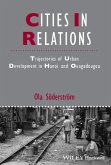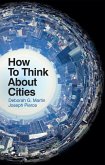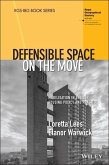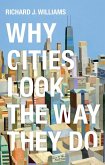How Cities Learn traces the circulation of bus rapid transit (BRT) to understand how and why it was widely adopted in South Africa.
_ Investigates the global proliferation and localization of BRT
_ Examines the production and distribution of transportation knowledge in the global south
_ Addresses the spatial and social legacy of apartheid in South African cities
_ Reveals a new way of understanding the intersections between policy, people and place
_ Essential reading for scholars of geography, politics, sociology and transportation, as well as urban planners and practitioners
_ Investigates the global proliferation and localization of BRT
_ Examines the production and distribution of transportation knowledge in the global south
_ Addresses the spatial and social legacy of apartheid in South African cities
_ Reveals a new way of understanding the intersections between policy, people and place
_ Essential reading for scholars of geography, politics, sociology and transportation, as well as urban planners and practitioners
'This carefully written and researched study offers detailed analysis of South African cities' uneven implementation of bus rapid transit systems. Scholars who participate in the lively global conversation on urban policy will find much to contemplate within this thoughtful book.'
Garth Myers, Paul E. Raether Distinguished Professor of Urban International Studies, Trinity College, Hartford
'Urban problems are becoming increasingly complex requiring the actors and institutions of governance to continually learn, adapt and innovate. But how does this learning happen? This book provides an extraordinary case study. It describes with uncommon clarity an intricate process of policy transfer involving global actors and circulations but also embedded local concerns, politics and governmental arrangements. It is essential reading for urban scholars and public policymakers.'
Philip Harrison, South African Research Chair in Spatial Analysis and City Planning, University of the Witwatersrand, Johannesburg
Garth Myers, Paul E. Raether Distinguished Professor of Urban International Studies, Trinity College, Hartford
'Urban problems are becoming increasingly complex requiring the actors and institutions of governance to continually learn, adapt and innovate. But how does this learning happen? This book provides an extraordinary case study. It describes with uncommon clarity an intricate process of policy transfer involving global actors and circulations but also embedded local concerns, politics and governmental arrangements. It is essential reading for urban scholars and public policymakers.'
Philip Harrison, South African Research Chair in Spatial Analysis and City Planning, University of the Witwatersrand, Johannesburg








